The Case for Quartz Luxury Watches: Featuring F.P. Journe, Grand Seiko, and Accutron
by Raman Kalra
Raman Kalra is the founder of The Watch Muse blog and has kindly agreed to share some of his articles with us here on Quill & Pad.
___________________________
When starting out on a watch journey, one of the first questions to consider is the choice between quartz and automatic watches. Many of us have been aware of these two options since a young age, with the perception that automatic (and mechanical) watches are “better” and more expensive, while quartz watches are entry-level and lower quality.
While this may hold some truth, as quartz watches are mass-produced and often found in cheaper models, luxury brands also produce high-end quartz pieces that are equally impressive from a technological standpoint.
To help answer questions about the viability of luxury quartz watches, this article will provide a high-level comparison of quartz versus mechanical movements and use three watches as examples to highlight the case for luxury quartz pieces.
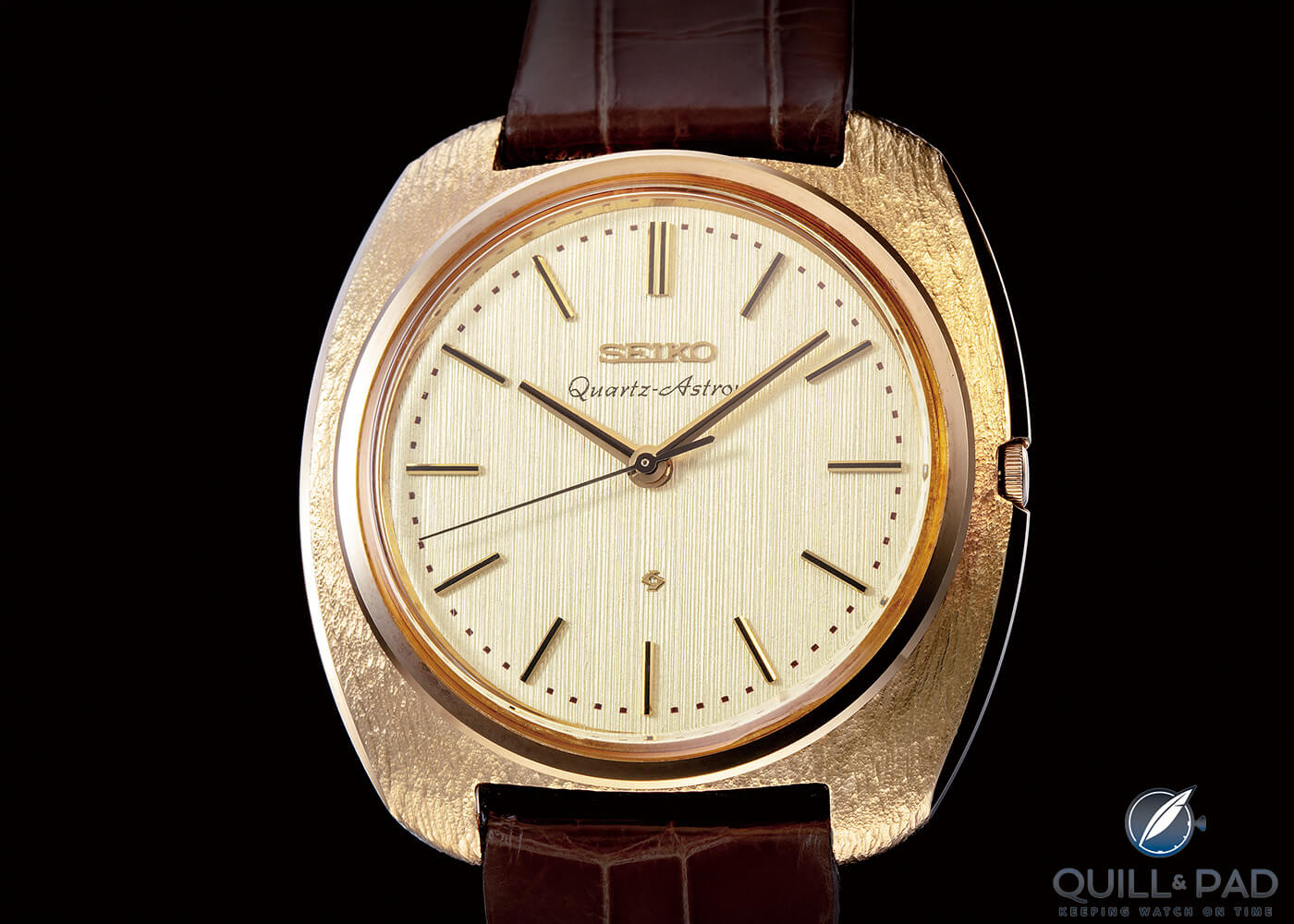
Seiko Quartz Astron 35SQ
Quartz movements have been around since 1929, but it was the launch of the first quartz wristwatch, the Seiko Quartz Astron 35SQ, in 1969 that revolutionized the industry. This marked the start of the infamous Quartz Crisis era, in which many notable Swiss brands needed to rethink their strategy to compete with highly accurate and affordable quartz offerings from Japan. At that time, mechanical watches were viewed primarily as tools to tell the time, and a cheaper and more accurate prospect was extremely appealing.
Quartz movements were seen as the new technology of the time, providing greater accuracy than even the most expensive mechanical movements, while requiring less servicing and only the replacement of a battery every few years.
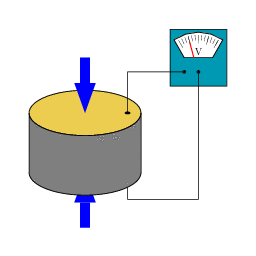
Piezoelectric diagram (animation courtesy Wikipedia)
A quartz movement requires a battery for its power source. The battery sends a constant electrical current through a piezoelectric quartz crystal, which vibrates at a constant frequency. A crystal generates electricity when subjected to pressure (or temperature), and vibrates when an electric field is passed through it.
Mechanical watches are a traditional means of tracking time that requires exceptional skill and craftsmanship to assemble because they require a series of tiny high precision components to be aligned with extremely tight tolerances. Technological advancements that have allowed for more accurate movements over the years; however, the basic premise of a mechanical watch remains the same as it has been for centuries.
A mechanical watch movement gets its energy from a wound spring (mainspring), which is then released via the balance wheel. The power is then transferred through a series of gears, and from there, the escapement releases the wheels, leading to the movement of the hands on the dial. To reduce friction and improve accuracy and longevity, mechanical watch movements also feature jewels, such as sapphire or ruby. Before synthetic jewels, this was yet another factor contributing to the high cost of mechanical watches.
Mechanical watches come in two forms: manual-wound or automatic, which relates to how the watch receives its energy to wind the mainspring. The former requires periodic winding of the crown by the user, while the latter uses a rotor that rotates with the movement of the user.
Before we consider a few luxury quartz examples, it is necessary to be aware of the basic fundamentals of the differences between quartz and mechanical movements. Quartz watches, ranging from Swatch to Omega to Cartier, are widely available. The focus here is on three specific examples to highlight the extent of engineering behind some luxury quartz pieces, including the F.P. Journe Élégante.
————————————————————————————————————–
—————————————————————————————————–
F.P. Journe Élégante
The F. P. Journe Élégante is the most expensive and high-end example on the list. F. P. Journe is known for producing some of the most impressive timepieces available and is in the same tier as Patek Philippe, if not higher. Journe has tackled numerous watchmaking issues including constant force and chromatic precision.
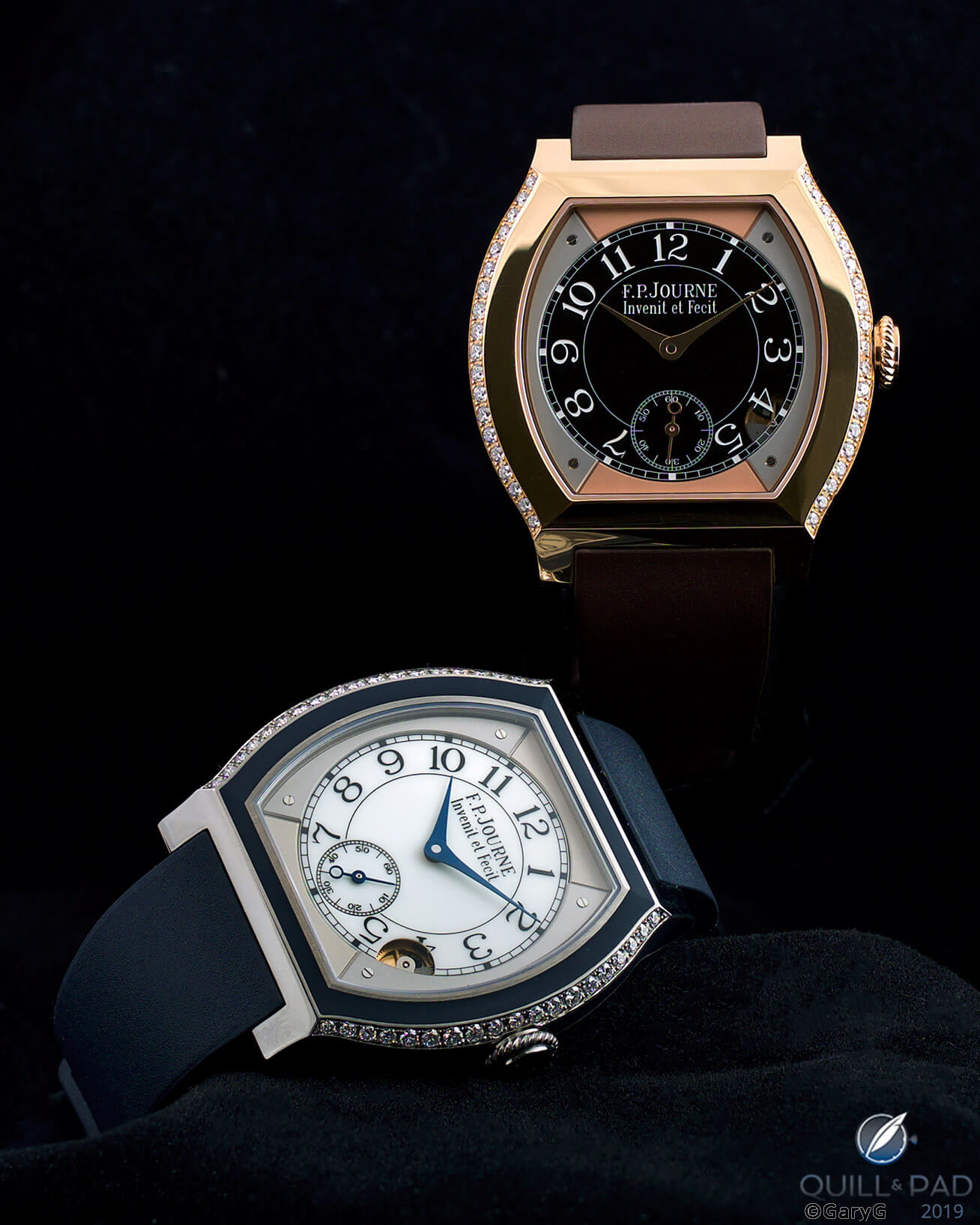
Élégantes from F.P. Journe in titanium (left) and red gold
With the Élégante, Journe took on the challenge of quartz movements. The goal was to address the limited battery life of quartz watches, which generally require a battery change every two years. The longevity of the product, rightly or wrongly, is not seen as everlasting in the same way as mechanical watches are viewed.
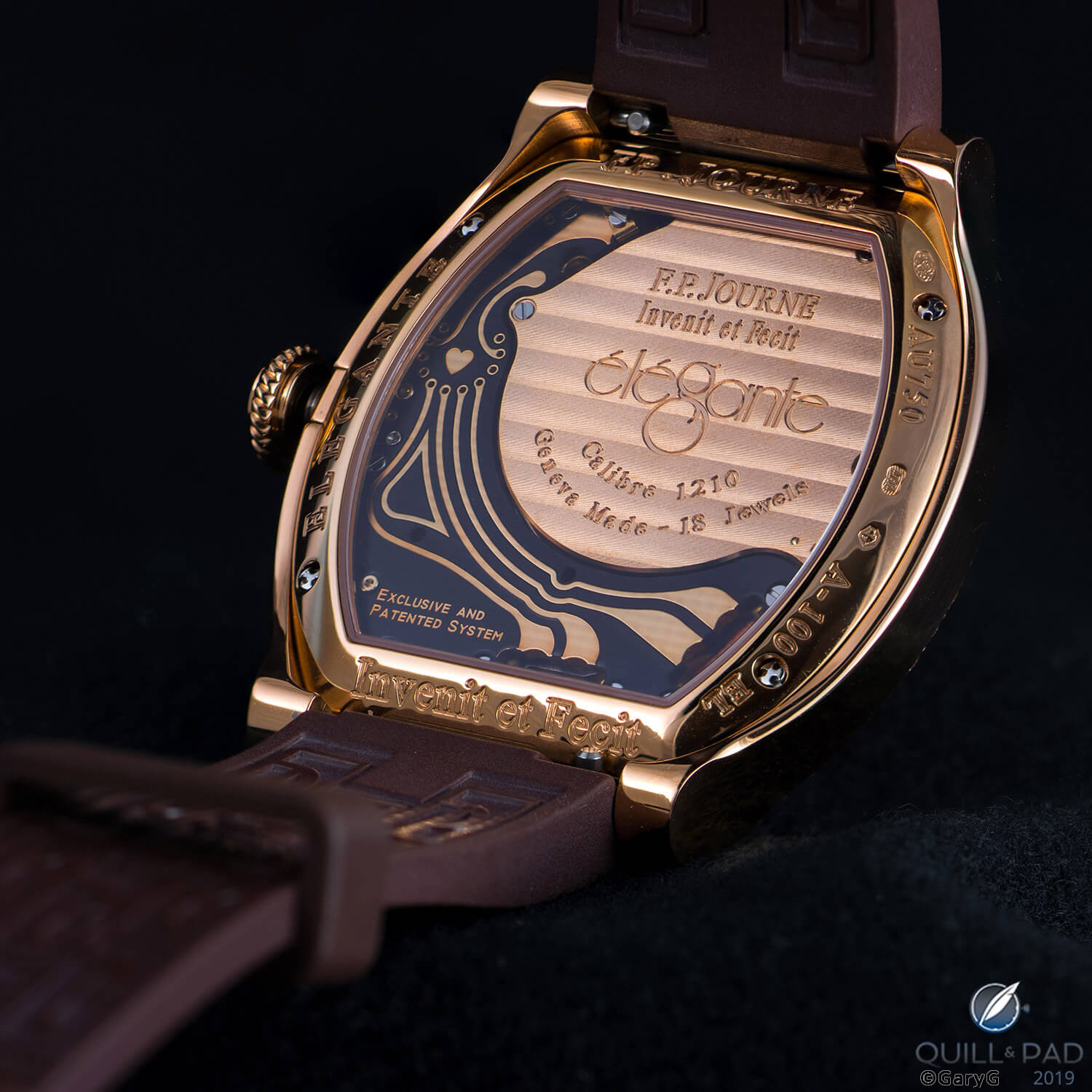
No winding necessary: battery cover and circuit board, F.P. Journe Élégante
Mechanical watches are often recognized by their sweeping second hand, while quartz watches have a second hand usually jumping every second to conserve battery life. However, F. P. Journe, known for their exquisite timepieces, decided to take on the challenge of extending battery life in a unique way with the Élégante. Journe engineered a function to stop the hands from moving, similar to the dark always-on display found on modern technology.
A small rotor at 4 o’clock, resembling that of an automatic watch, activates this mode after 35 minutes of inactivity. During standby mode, the microprocessor continues to keep time, and upon activation, the watch automatically sets to the correct time. This ingenious feature can extend the battery life to 8 to 10 years for regular wearing, and up to 18 years if the watch is worn more occasionally.
The engineering of such functionality into a traditional quartz movement is truly impressive.
In addition to the Élégante’s unique quartz movement, F. P. Journe ensures that the rest of the watch lives up to their quality standard. Originally launched in 2014 as a women’s watch, followed by a men’s version in 2016, the Élégante boasts a 40mm width and 48mm length tonneau-shaped case made of titanium with a thickness of only 7.35mm.
Unlike typical F. P. Journe pieces that are polished, the Élégante’s case is a mix of brushed and polished surfaces, adding visual complexity.
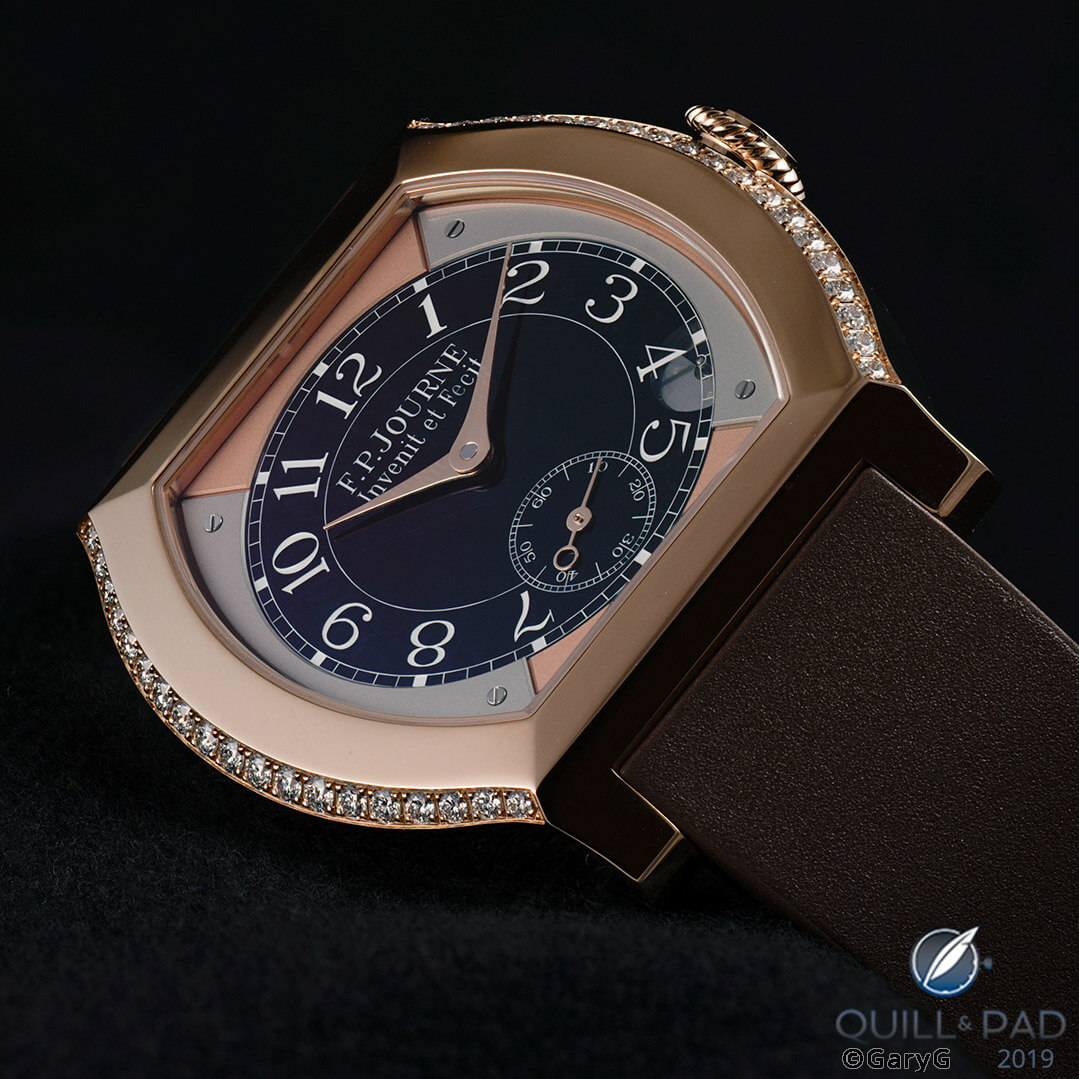
F.P. Journe Élégante with movement sensor visible at 4 o’clock
The dial is well-proportioned, with the right balance of indices, text, and open space, combined with a font that gives the impression of an old-fashioned clock, and a relatively sporty case. The dial’s Super-Luminova coating is not only eye-catching but also useful.
The Élégante’s retail price is $14,500, but its strong following has made it a sought-after timepiece on the secondary market, often commanding nearly five times the retail price.
Whether you are in the market for something high-end and unique or simply appreciate exquisite timepieces, the Élégante is worth considering.
—————————————————————————————————–
—————————————————————————————————–
Accutron Spaceview
Moving on to the Accutron Spaceview, this quartz watch has an interesting history that sets it apart. Previously associated with Bulova, Accutron became an independent brand under the Citizen Group umbrella in 2020, with the release of the Spaceview 2020 and Spaceview DNA. The appeal of the Accutron Spaceview lies in its movement, which has been pioneering since the 1950s.
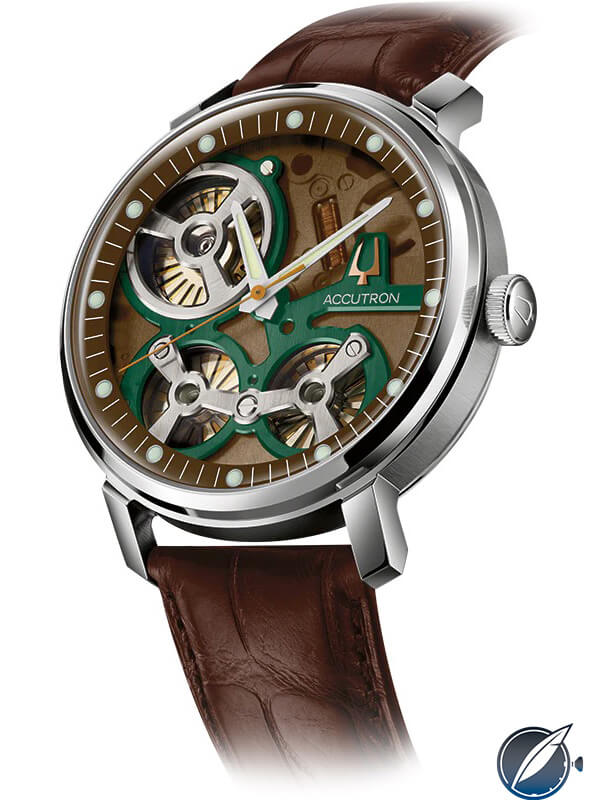
Accutron Spaceview 2020
While many companies were developing electronic watches, the first released was the Hamilton Electric 500 in 1957, which used a balance wheel similar to mechanical watches and magnetism for movement powered by a small battery. However, it was not much more accurate than a regular mechanical watch and was fragile.
Bulova then removed the balance wheel and replaced it with a tuning fork that vibrates 360 times a second, driven by an electromagnetic coil powered by a battery. This increased the resistance to shocks and dramatically improved accuracy, giving birth to the Accutron.
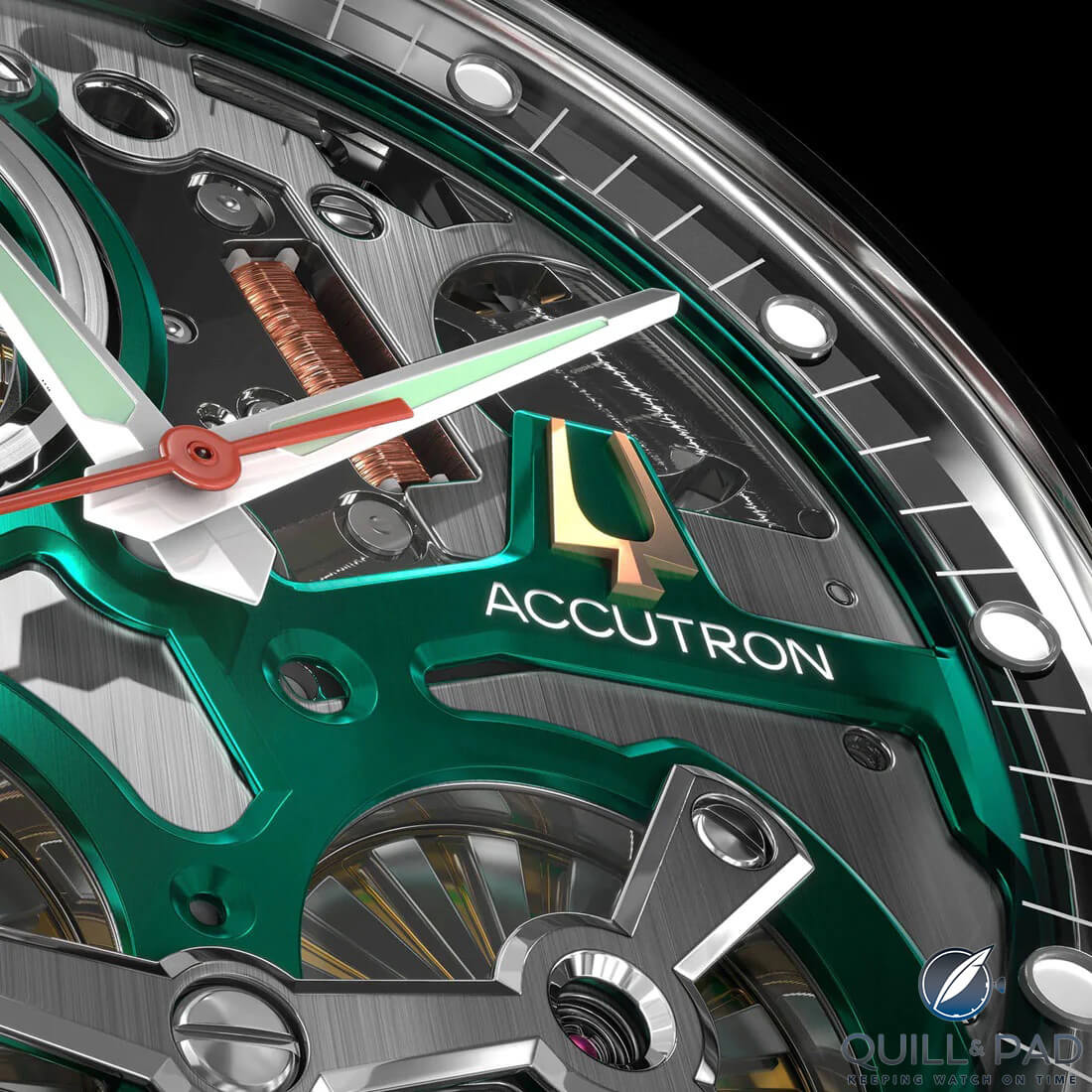
Accutron Spaceview 2020 dial details
With the relaunch of the Spaceview in 2020, there have been some improvements, but the core principles of the electrostatic drive system remain. In the new models, you will find an electrostatic motor driving the second hand, and two smaller electrostatic generators to provide the charge.
In addition, there is a step motor powering the hour and minute hands, which leads to two independent movements. This creates a striking aesthetic and is similar to the original Spaceview in looking somewhat futuristic. To build on this, the motor driving the watch movement rotates at a constant, quick rate, driven by an oscillating weight, further adding to the distinctive look.
What Accutron aims to achieve by creating these open dials is similar to the model of yesteryear – a celebration of their technology. It continues, as Accutron has built in a power-saving mode similar to what we saw with the Élégante. When the watch does not move for five minutes, the second-hand stops, but the hour and the minute hand continue. On top of this, there is a feature called the energy-conserving mode.
If the watch has not moved for 10 days, the watch will then stop the hour and minute hands to help save power. This feature can also be manually activated by pulling the crown out for an hour and has been a long R&D process for Accutron to achieve. Moving on to the watches themselves, there are minor differences between the Spaceview 2020 and Spaceview DNA.
The Spaceview 2020 is slightly smaller at 43.5 millimeters in diameter and has more traditional straight lugs, whereas the DNA is 45 millimeters in a shield-shaped case and hooded lugs. They are both on the thicker side at 15.4 millimeters, so they are not small, subtle watches, but then they are not trying to be.
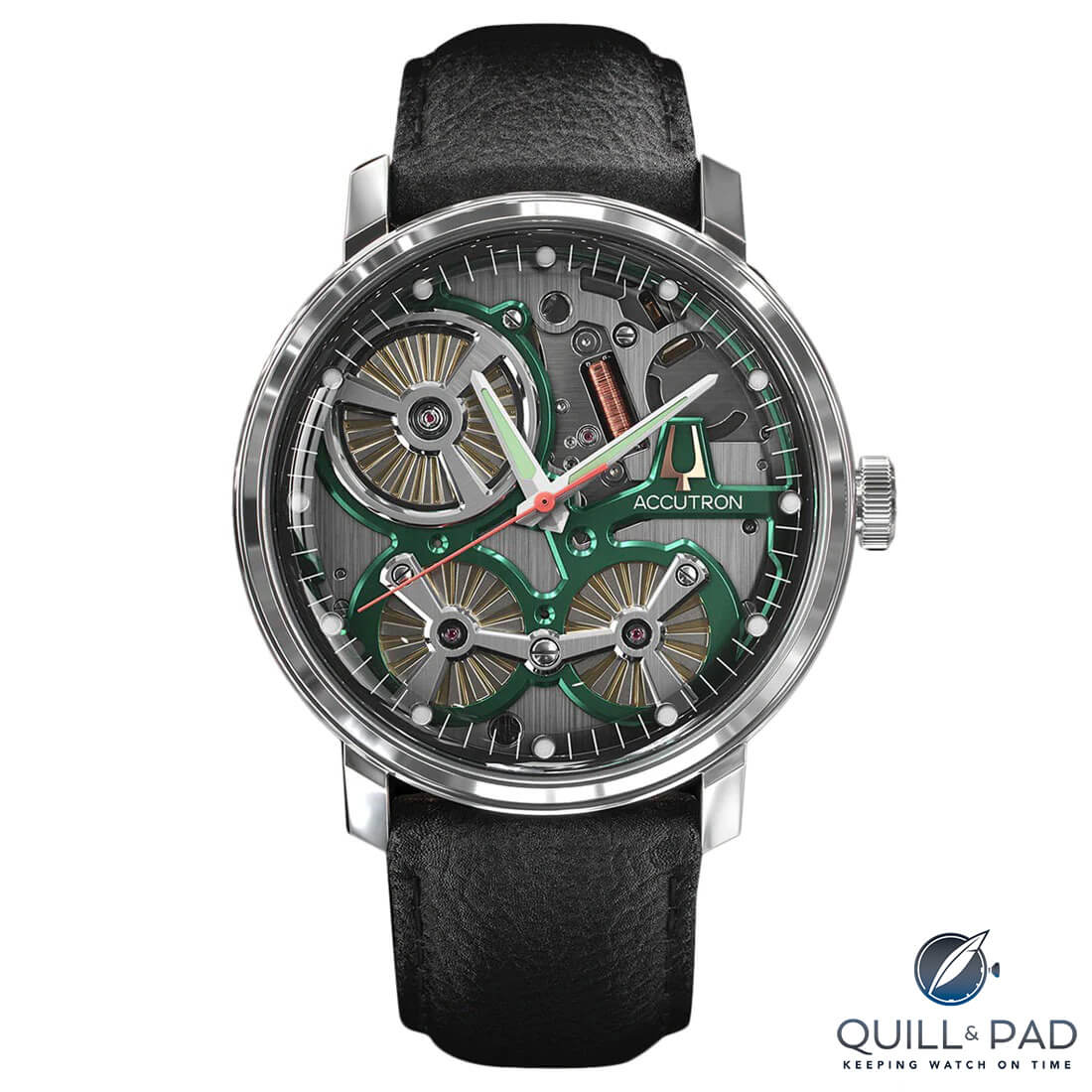
Accutron Spaceview 2020
The cases are both made from 316L stainless steel but end up being lighter than expected given the movement is light, and there is a good amount of empty space within the watch. On the dial, the Spaceview 2020 is closer to the original in terms of the color palette but with the DNA, Accutron has given it a more modern twist and offers it with a blue backplate and various bezel colors.
The famous TV series Mad Men featured an Accutron, and they put it extremely well – the Accutron is not just a timepiece but a conversation starter. The watches have an RRP from around $3,450. There is a lot to consider here – a novel movement in an interesting watch with true heritage.
—————————————————————————————————–
—————————————————————————————————–
Grand Seiko SBGV245
The final quartz example that goes above and beyond differs from the previous two. It is not unique to a single model but found in a number of variations from time-only pieces to GMTs. I am talking about the Grand Seiko 9F movement, and the example here is the SBGV245 “Grey Beast.” The example is chosen purely based on my preference for how it looks.
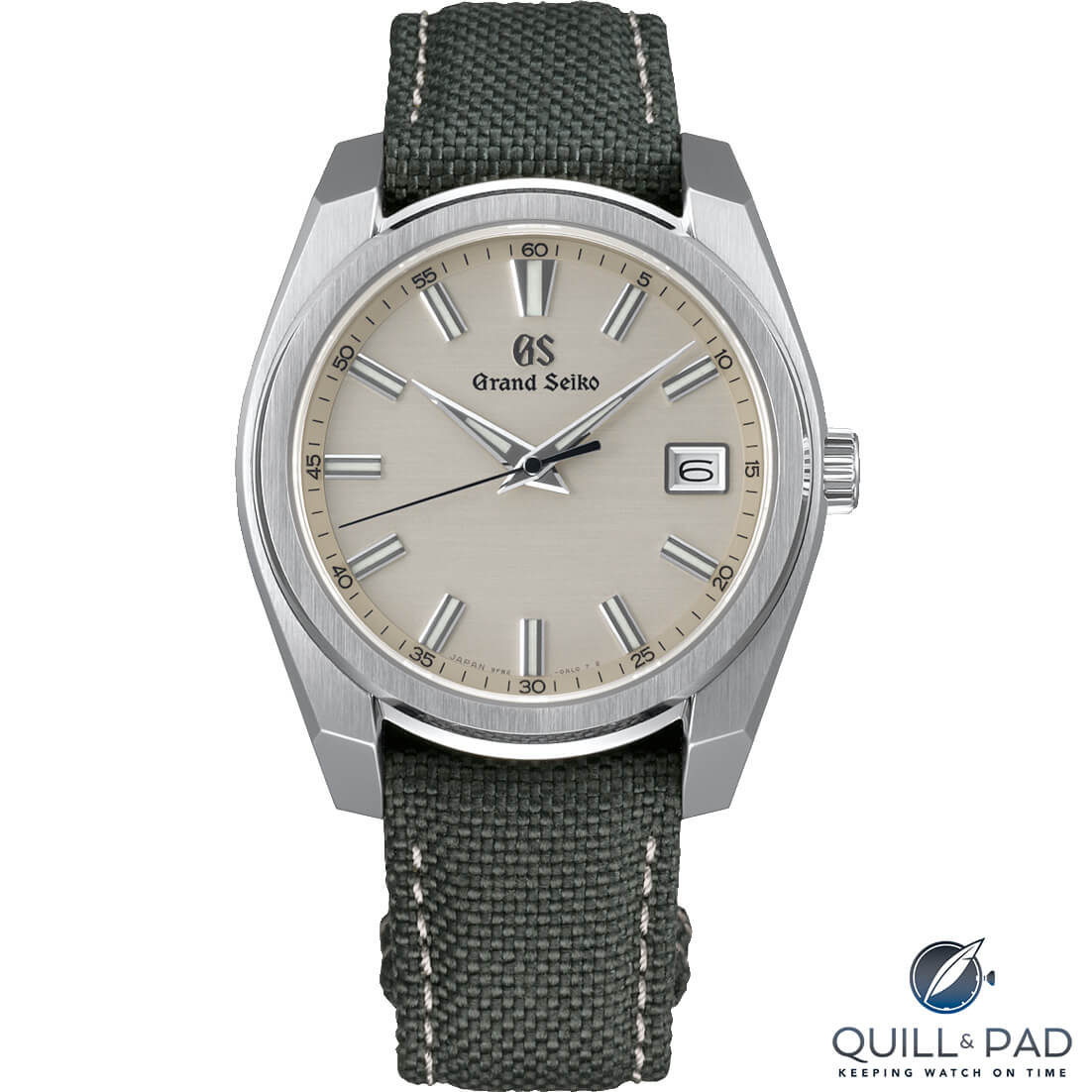
Grand Seiko SBGV245J
Grand Seiko goes the extra mile in terms of quality across the board, and that includes their quartz 9F movement. The brand views the movement in the same light as its most impressive mechanical and Spring-Drive calibers. The idea is quality should not be compromised, and they are designed to be serviced and maintained for lifelong use.
So how do they achieve this? Firstly, they grow their quartz. Quartz is obviously an important aspect of the movement as it is the driving force behind timekeeping. They grow and age quartz crystals for three months, only selecting the highest quality to be used in the end product.
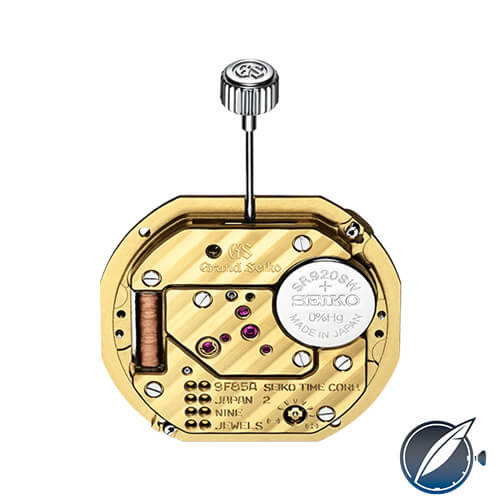
Grand Seiko Caliber 9F
To ensure the precision of the selection process, each quartz is tested for its response to temperature fluctuations, which can affect accuracy. Once the crystal’s response to temperature is understood, it is paired with an integrated circuit programmed specifically to match that quartz. This is then tested as a movement, and any deviations in the oscillation frequency are quickly resolved to result in accuracy that far exceeds standard quartz watches.
The Grand Seiko 9F, for example, is capable of +/- 10 seconds per year, compared to a basic quartz caliber that can manage +/- 15 seconds per month.
But the innovation doesn’t stop there.
A common complaint with quartz watches is that the hands don’t always line up with the indices, but Grand Seiko has addressed this with an engineering feat called the “Backlash Auto-Adjust Mechanism.” This feature utilizes a dedicated gear with a hairspring that applies a small amount of force to the hands, ensuring that they land on the indices perfectly every time, while also keeping the second-hand movement sharp and stable.
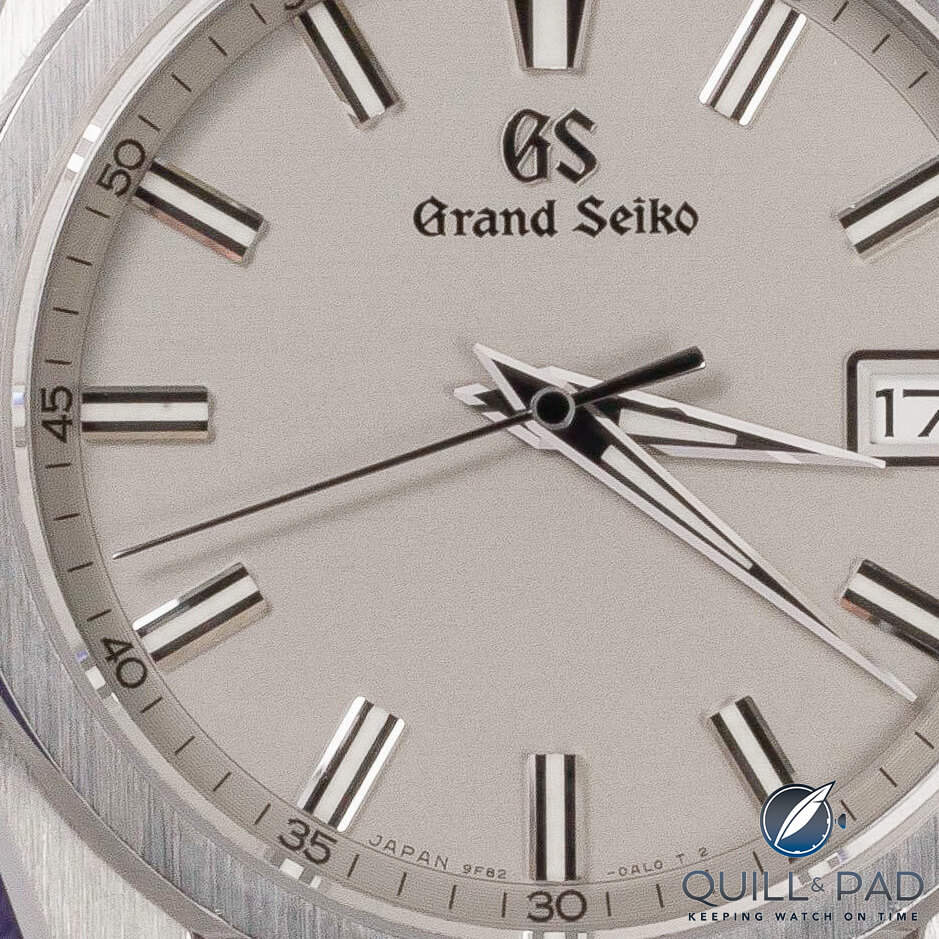
Grand Seiko SBGV245J dial details
Additionally, the movement produces enough torque to drive broad hands, rather than requiring thin, light ones, resulting in the same level of craftsmanship found in mechanical watches. All of this is housed in a durable, full-metal case with jewels, emphasizing the watch’s longevity and serviceability.
The Grand Seiko 9F movement can be found in a range of models across the brand’s lineup, allowing for customization and personalization. For example, the SBGV245 “Grey Beast” model features a beautiful grey dial contrasting with Zaratsu-polished indices, and a case that mixes brushed and polished surfaces to create depth and interest.
The watch’s finishing is truly impressive, and must be experienced in person to be fully appreciated. While this specific model is no longer in production, other options are available, with prices starting at around $2,700 (ref. SBGX261).
Quartz watches have struggled to overcome their association with cheaper pieces and the “Quartz Crisis” that nearly destroyed mechanical watches altogether. However, brands like Grand Seiko are taking quartz seriously and pushing the boundaries of technology within them.
Beyond these examples, other luxury brands such as Omega, JLC, and Cartier offer quartz options, providing a range of choices for consumers. Perhaps it’s time to reconsider the potential of quartz in the context of high-end brands.
Would you ever consider a luxury quartz watch over a mechanical counterpart?
You can read more articles by Raman Kalra at www.thewatchmuse.com.
* This article was first published 16 April 2023 at The Case for Quartz Luxury Watches: Featuring F.P. Journe, Grand Seiko and Accutron
You might also enjoy:
Why I Gave It: A Pair Of Élégantes By F.P. Journe
Quartz Crush: F.P. Journe Élégante 48mm
Quartz: Past, Present, But No Future?
Piaget Emperador Coussin XL 700P: Hybrid Performance, Piaget Perfection
Patek Philippe Twenty~4: Complete Overview Of Two Decades Of Timeless Elegance
Leave a Reply
Want to join the discussion?Feel free to contribute!

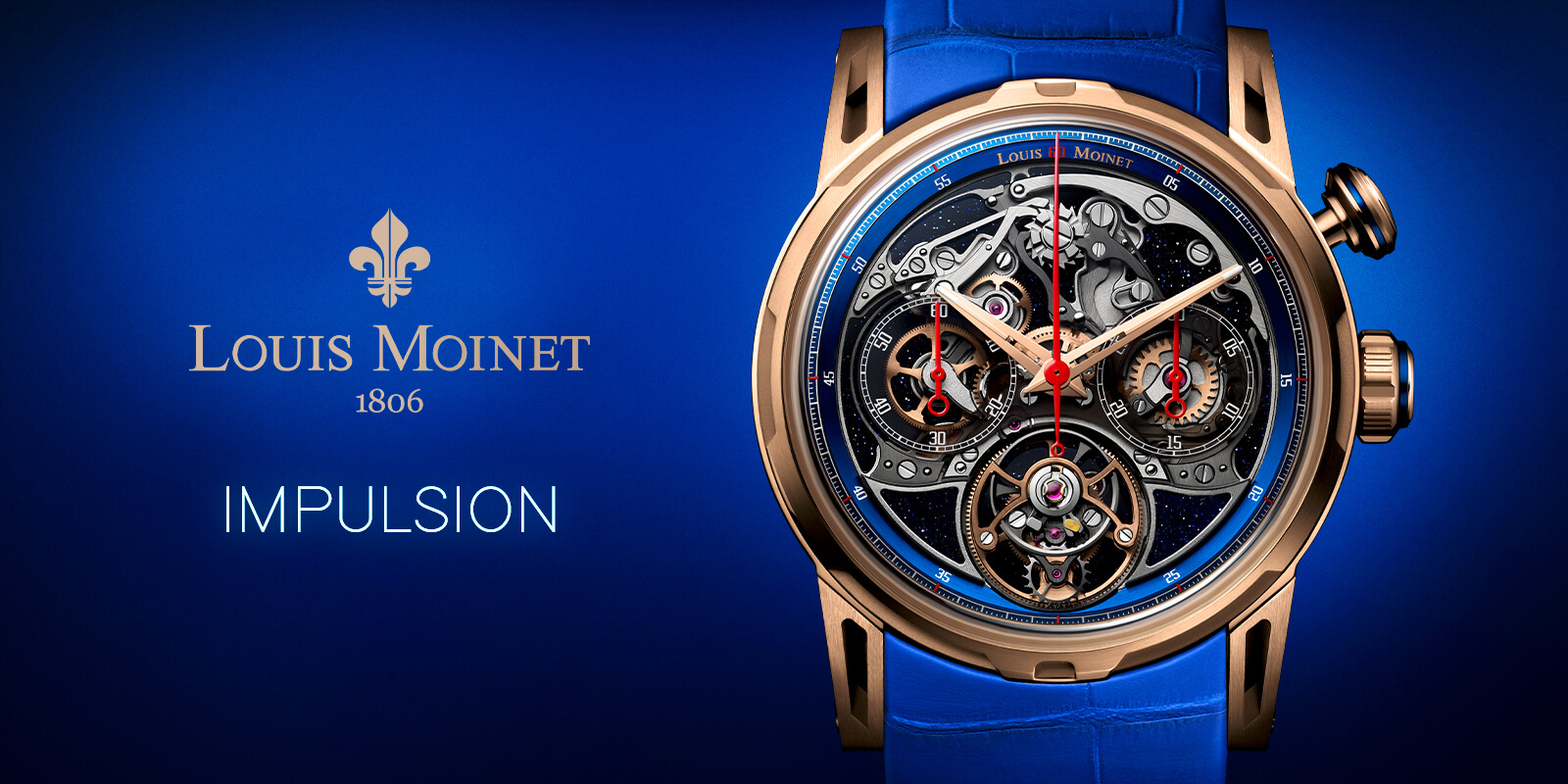
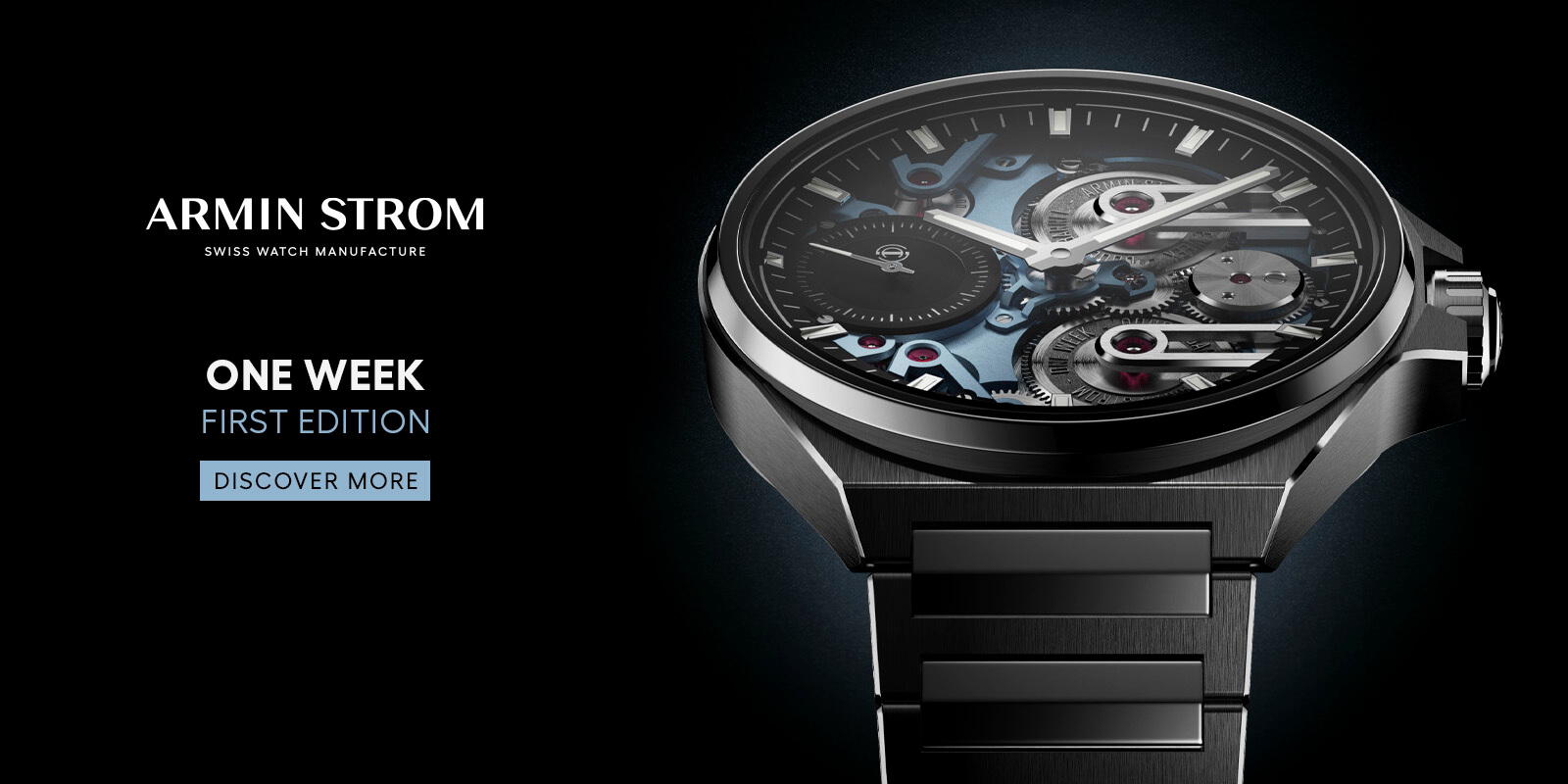
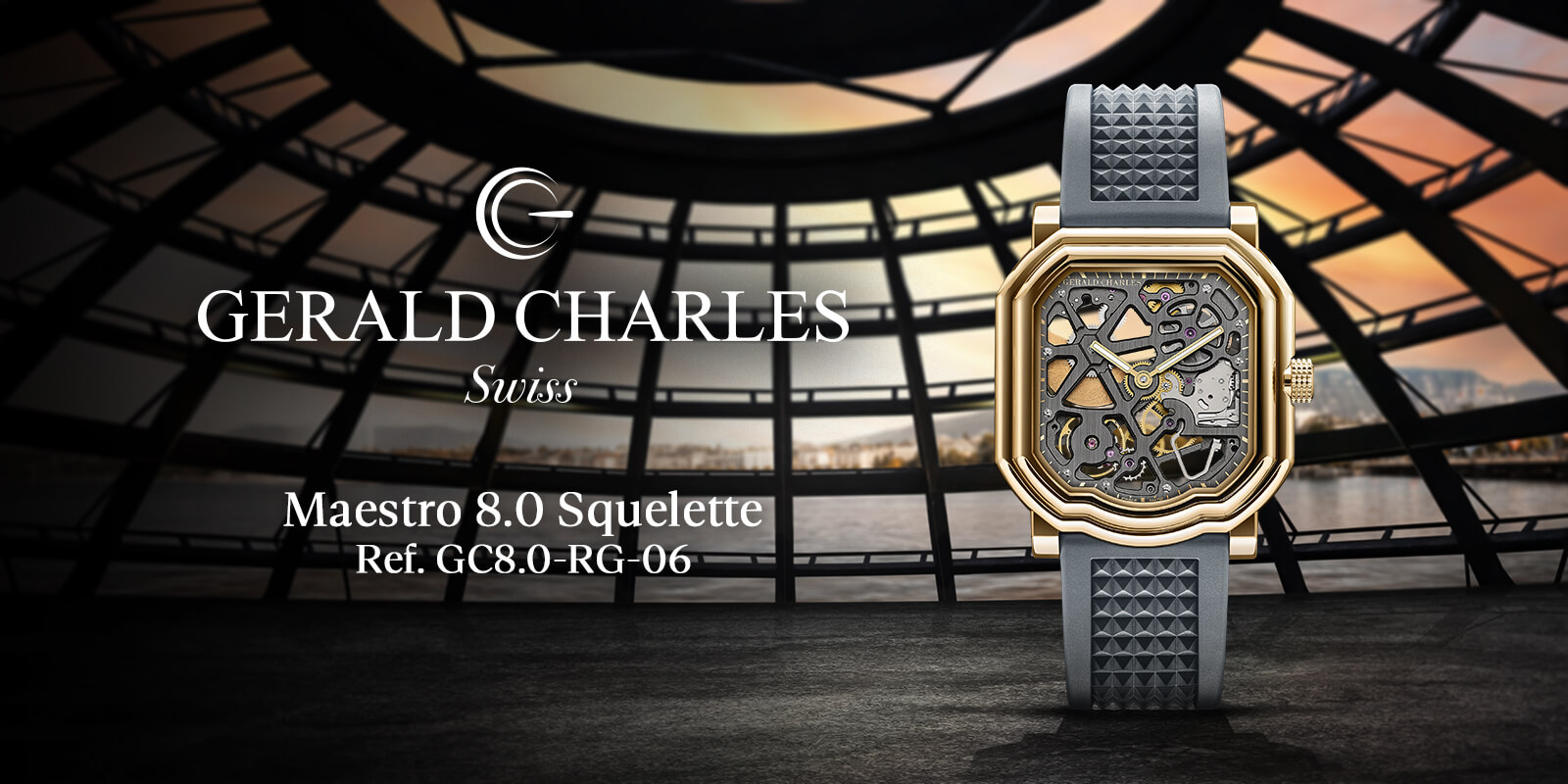
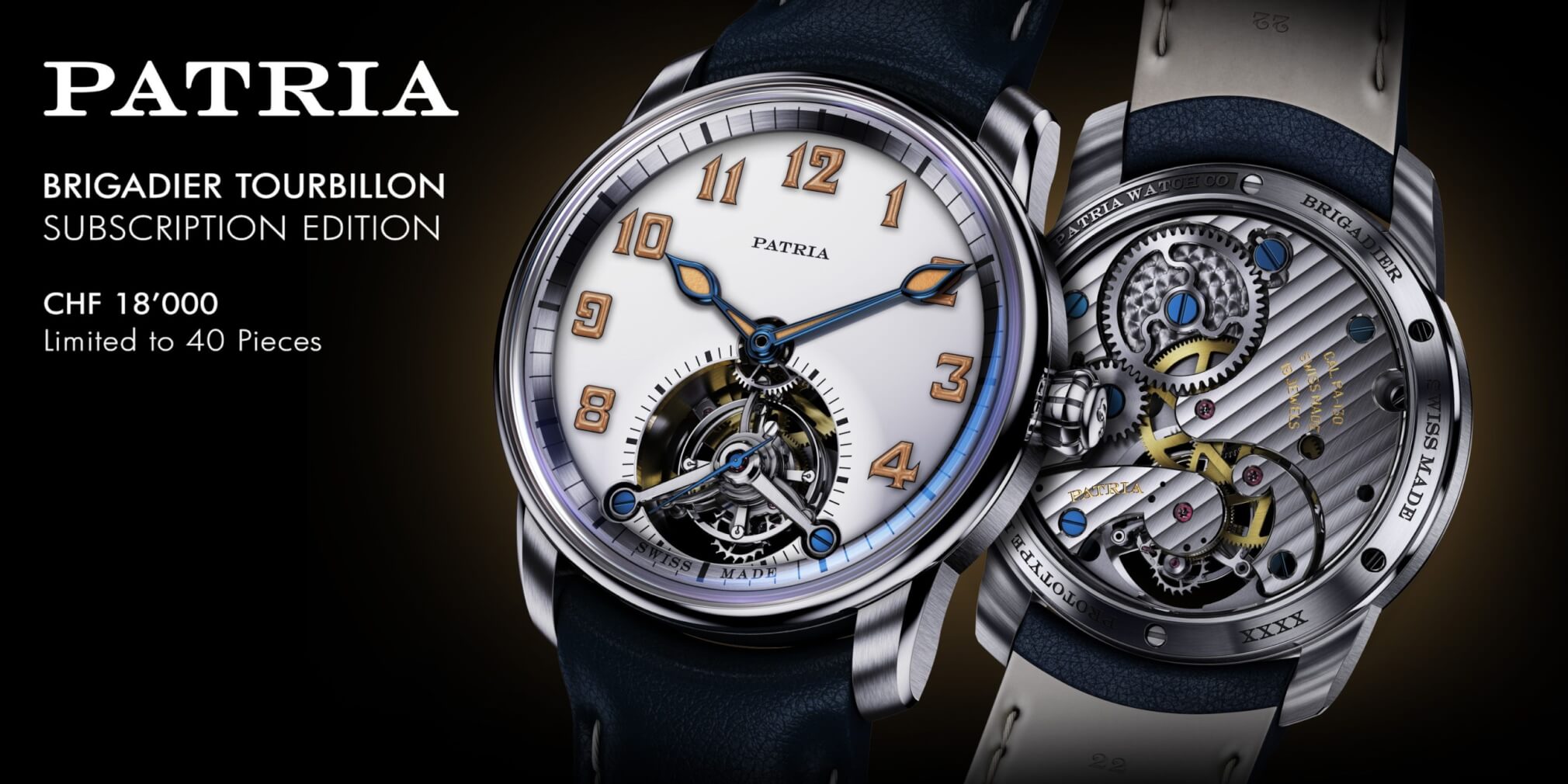


Not mentioning the Citizen caliber 0100 leaves this article very outdated.